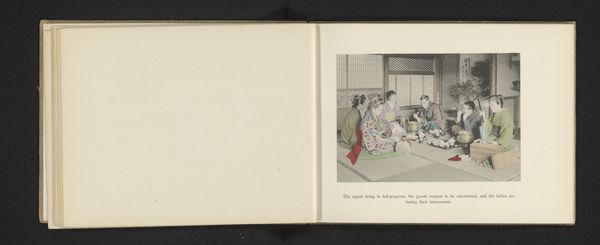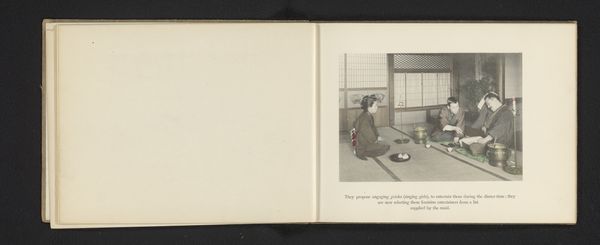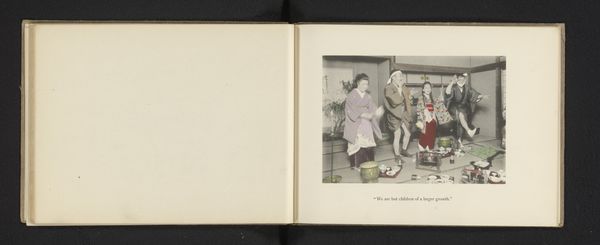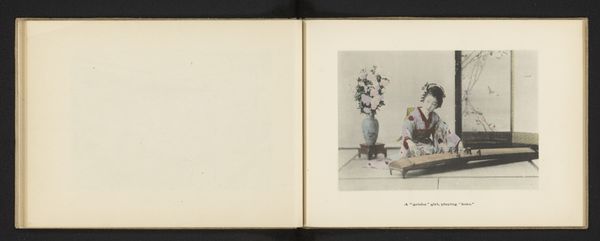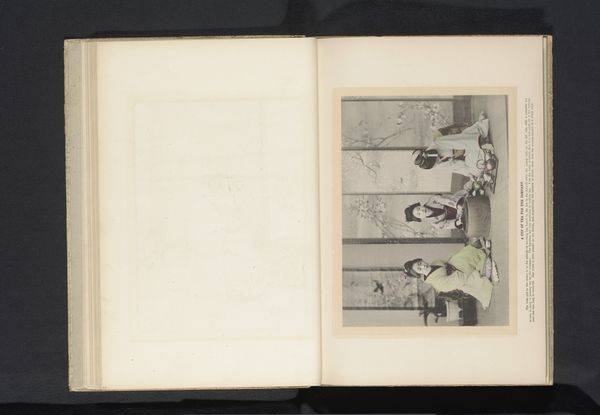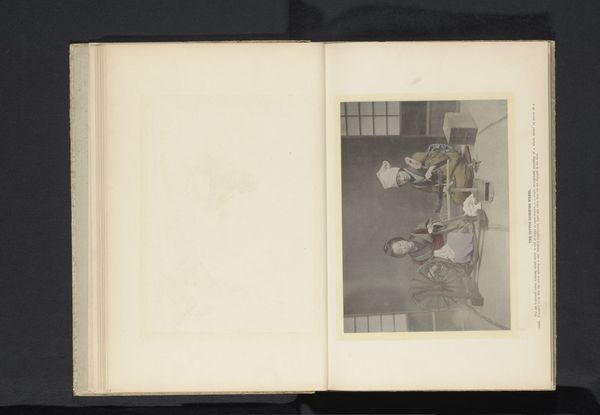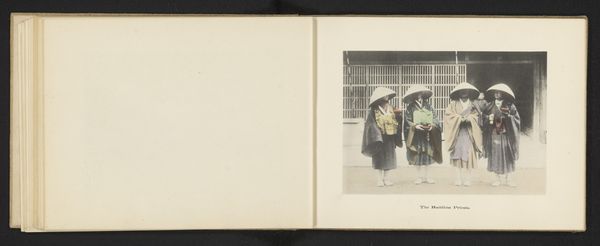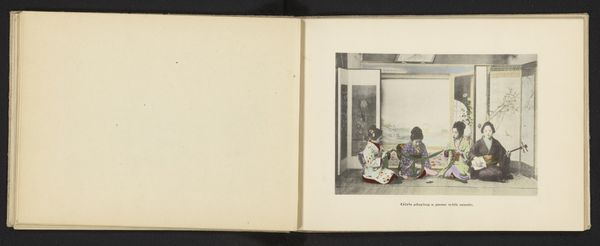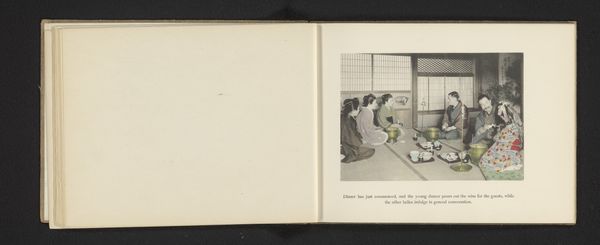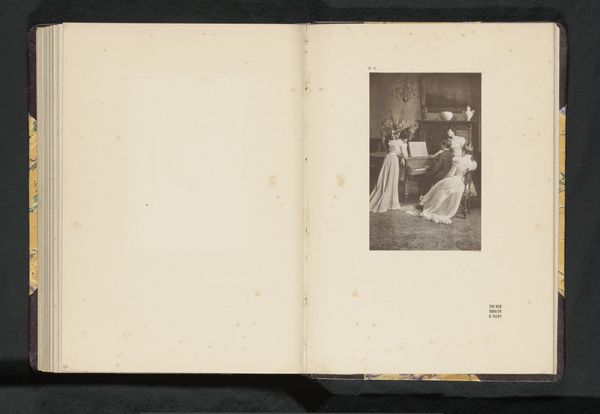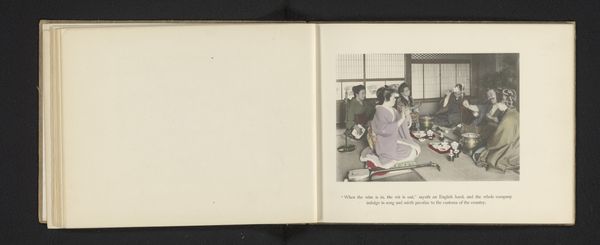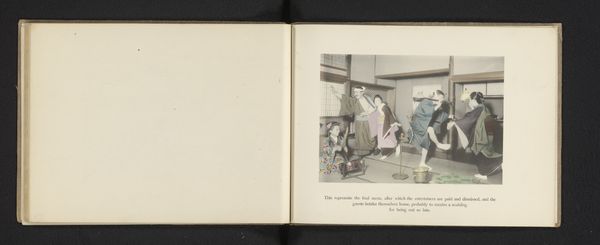
Geisha introduceert een groep geisha's die zullen optreden bij twee mannen in een theehuis in Japan c. 1896 - 1906
0:00
0:00
albumen-print, photography, albumen-print
#
albumen-print
#
asian-art
#
photography
#
albumen-print
Dimensions: height 105 mm, width 151 mm
Copyright: Rijks Museum: Open Domain
Editor: This is a photograph, an albumen print from between 1896 and 1906, by Kōzaburō Tamamura, titled "Geisha introduceert een groep geisha's die zullen optreden bij twee mannen in een theehuis in Japan." It captures a moment of introduction, and I'm struck by the formality of the scene and wonder what's happening beyond what the image immediately presents. What's your take on this photograph? Curator: It’s interesting that you’re drawn to what's happening beyond the surface. I think understanding the social context is vital here. This image, part of the Japonisme movement, wasn't simply documenting reality, it was participating in a dialogue—often a skewed one—between the East and West. What assumptions might a Western audience at the time have brought to an image like this? How do you think gender dynamics play into the scene? Editor: I guess they would have exoticized the scene, and perhaps saw the geishas as subservient. Is there a feminist critique to apply to such depictions? Curator: Absolutely. Consider the gaze: who is doing the looking? The assumed viewer, largely Western and male, is positioned as the consumer of this carefully constructed image of Japanese culture. Think about how the geishas' representation potentially reinforces existing power structures, and the implications of staging this 'authentic' moment for a foreign audience. Also consider if that initial consumption by male gazes influenced the very staging of the event that was photographically immortalized? Editor: So it's not just a neutral observation; the photograph itself is an intervention, loaded with cultural and gendered implications. I didn't initially consider that. Curator: Precisely. And by recognizing that, we can begin to unpack the complexities and contradictions inherent in cross-cultural representation and power dynamics. This helps to ask, what isn’t being shown, what perspective isn’t shared? Editor: This has really given me a new perspective on interpreting historical images. Thanks! Curator: My pleasure! There is a richness to such investigation.
Comments
No comments
Be the first to comment and join the conversation on the ultimate creative platform.
